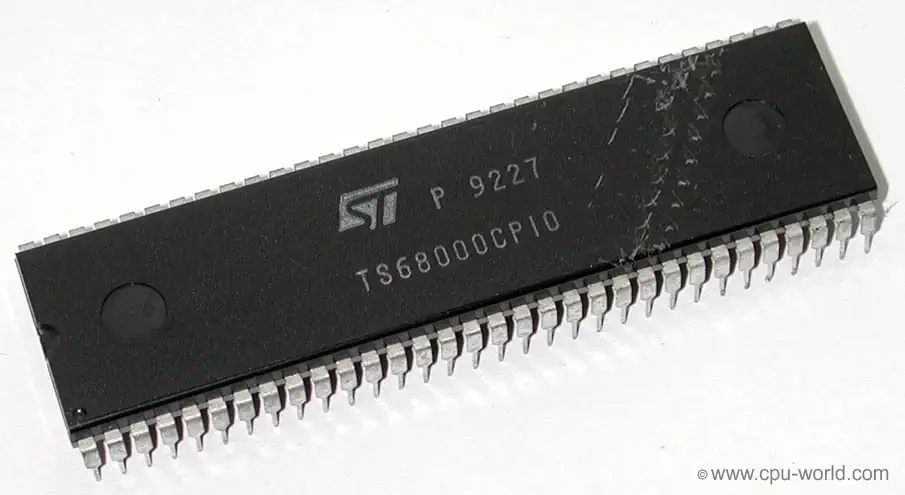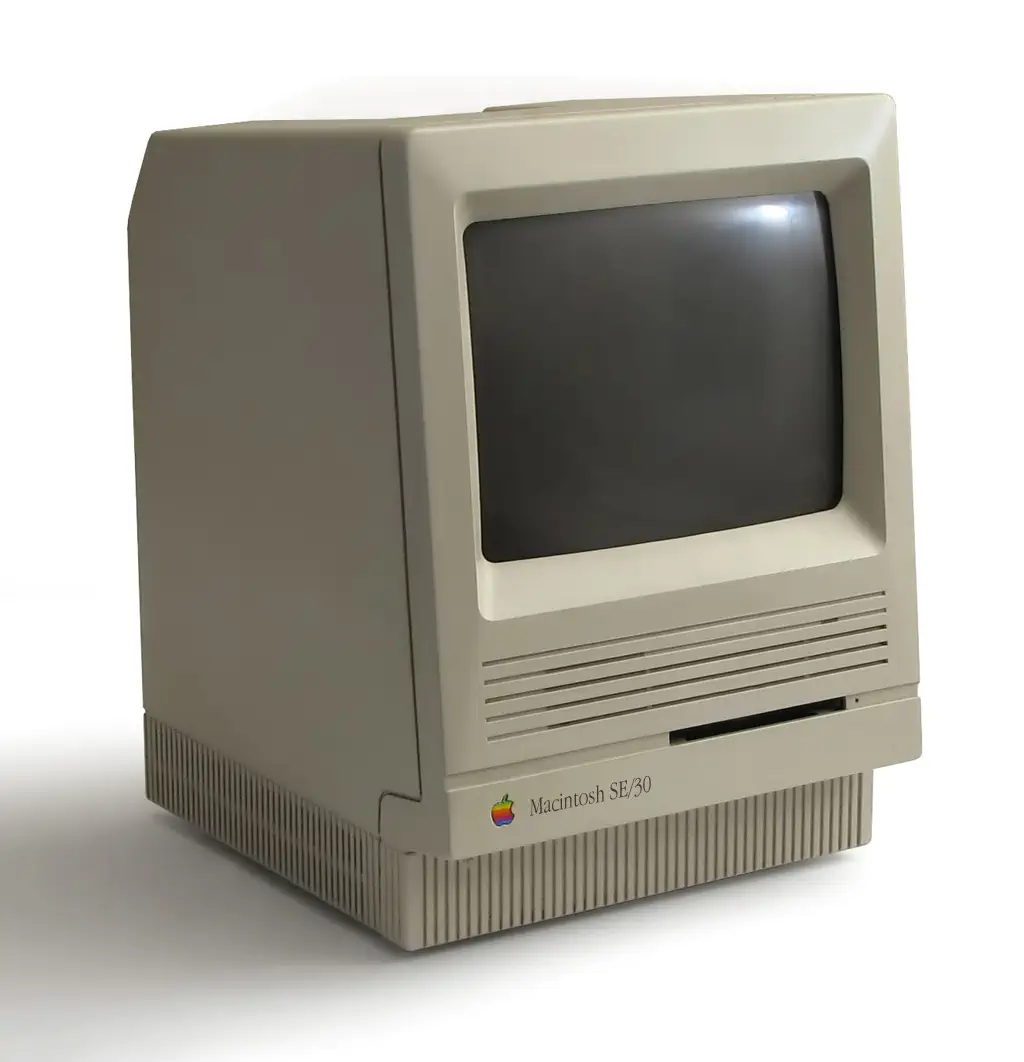Apple Macintosh SE/30
The Macintosh SE/30 was introduced in 1989, it is the fastest in the black and white screen Macintosh series. The 30 in the name represented the Motorola 68030 CPU which ran at 15.667 MHz. The computer also had a Motorola 68882 Floating Point Unit (FPU).
The SE/30 came with 1MByte of RAM, and was upgradable to 128MByte using 30-pin SIMM sockets, which replaced the need for soldering RAM chips directly onto the motherboard or modules that would use piggyback-clips to connect.
The SE/30 came in a few different configurations:
- 1MByte RAM, no HDD
- 1MByte RAM, 40 MByte HDD
- 4MByte RAM, 80 MByte HDD

Motorola 68000 CPU Family
The Motorola 68000 is a 16/32-bit microprocessor that was first released in 1979. It was widely used in computers and other electronic devices during the 1980s and early 1990s. The 68000 was known for its advanced architecture, which included a 32-bit internal bus and a 24-bit address bus, allowing it to access up to 16 megabytes of memory. This made it more powerful than many other processors of its time, such as the Intel 8086 and Zilog Z80. It was also designed to be highly modular and expandable, with a large number of on-chip and off-chip peripherals.
Some of the most famous and successful computers that used the 68000 was the Commodore Amiga and the Atari ST, both of which were popular in the home and personal computer markets. Additionally, it was also used in workstations, such as the Sun 3 and Apollo DN3000, and in a wide variety of embedded systems and industrial control systems. The 68000 was also used in the Macintosh, the first model of the Macintosh was powered by a Motorola 68000 CPU. The processor was eventually succeeded by the 68020 and 68030, which offered improved performance and additional features.
The 68000 has a 32-bit instruction set, with 32-bit registers and a 16-bit internal data bus. The address bus is 24-bit and does not use memory segmentation, making it easier to address memory. There are three ALU's (Arithmetic Logic Unit), two for calculating addresses, and one for data, and the chip has a 16-bit external address bus.
The 68000 architecture was expanded with 32-bit ALUs, and caches. Here is a list with some 680x0 versions and their major improvements:
- 68010 - Virtual memory support
- 68020 - 32-bit ALU & Instruction Cache
- 68030 - On-Chip MMU, 2x 256 byte cache
- 68040 - 2x 4K Cache, 6 stage pipeline, FPU
- 68LC040 - No Floating Point Unit (FPU)
- 68060 - 2x 8K Cache, 10 stage pipelinet

Source: WikiPedia - Motorola 6800
Source: WikiPedia - 68000 Series
RAM max: 128MB Sound Chip TTL Logic for PWM Sound 8-bit Pulse-width modulation Display Chip none Display 512x342 Mono Best Color monochrome Best Graphics 512x342 monochrome Sprites none System OS MacOS System 6 or 7 Storage Internal 3.5" 800K Disk Drive, no, 40 or 80MByte internal hard drive, optional external SCSI hard drive


